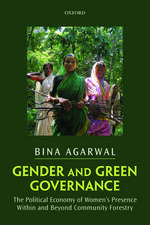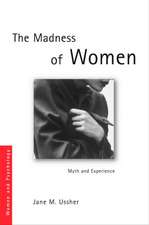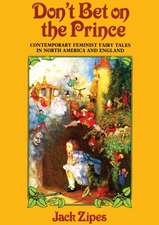Women in Eighteenth-Century Scotland: Intimate, Intellectual and Public Lives
Autor Deborah Simonton Editat de Katie Barclayen Limba Engleză Hardback – 28 oct 2013
| Toate formatele și edițiile | Preț | Express |
|---|---|---|
| Paperback (1) | 357.34 lei 3-5 săpt. | +25.24 lei 4-10 zile |
| Taylor & Francis – 10 iun 2019 | 357.34 lei 3-5 săpt. | +25.24 lei 4-10 zile |
| Hardback (1) | 1054.71 lei 6-8 săpt. | |
| Taylor & Francis – 28 oct 2013 | 1054.71 lei 6-8 săpt. |
Preț: 1054.71 lei
Preț vechi: 1286.24 lei
-18% Nou
Puncte Express: 1582
Preț estimativ în valută:
201.87€ • 208.04$ • 170.43£
201.87€ • 208.04$ • 170.43£
Carte tipărită la comandă
Livrare economică 03-17 martie
Preluare comenzi: 021 569.72.76
Specificații
ISBN-13: 9781409450467
ISBN-10: 1409450465
Pagini: 302
Ilustrații: Includes 22 b&w illustrations
Dimensiuni: 156 x 234 x 18 mm
Greutate: 0.45 kg
Ediția:New ed.
Editura: Taylor & Francis
Colecția Routledge
Locul publicării:Oxford, United Kingdom
ISBN-10: 1409450465
Pagini: 302
Ilustrații: Includes 22 b&w illustrations
Dimensiuni: 156 x 234 x 18 mm
Greutate: 0.45 kg
Ediția:New ed.
Editura: Taylor & Francis
Colecția Routledge
Locul publicării:Oxford, United Kingdom
Cuprins
Contents: Introduction, Katie Barclay and Deborah Simonton; Part I Intimate Lives: Female birthing customs and beliefs, Anne Cameron; Love and courtship in 18th-century Scotland, Katie Barclay; When a lass goes ’so round’, with her ’tua sides high’: oral culture and women’s views on illegitimacy, Svetla Baloutzova; Family, politics and reform in Margaret Cullen’s Home: a Novel (1802), Jane Rendall. Part II Intellectual Lives: The value of feminine culture: community involvement in the provision of schooling for girls in 18th-century Scotland, Lindy Moore; The depiction of literacy, schooling and education in the autobiographical writings of 18th-century Scottish women, Betty Hagglund; Making mechanics modern: Mary Somerville’s translation of Laplace’s Mécanique céleste, Margaret Carlyle and James Wallace; Tourist sites and travellers: women and late 18th-century Scottish tourism, Pam Perkins; Scarred, suffering bodies: 18th-century Scottish women travellers on slavery, sentiment and sensibility, Corey E. Andrews. Part III Public Lives: Women, land and power: a case for continuity, Rosalind Carr; Negotiating the economy of the 18th-century Scottish town: female entrepreneurs claim their place, Deborah Simonton; The display and trading of fashionable dress and its impact on women in Scotland’s growing urban centres, c.1780-1825, Louisa Cross; ’Outrageous acts and everyday rebellions’: criminal women in 18th-century Scotland, Anne-Marie Kilday; Further reading; Index.
Notă biografică
Katie Barclay is a Postdoctoral Research Fellow in the ARC Centre of Excellence for the History of Emotions, University of Adelaide. She is the author of Love, Intimacy and Power: Marriage and Patriarchy in Scotland, 1650-1850 (Manchester, 2011), winner of the 2012 Women’s History Network Book Prize and Joint Winner of the Senior Hume Brown Prize in Scottish History, and a number of articles on family life in Scotland. Deborah Simonton is Associate Professor of British History at the University of Southern Denmark and leads the Gender in the European Town Network. She is the author of A History of European Women's Work (London, 1998), Women in European Culture and Society: Gender, Skill and Identity from 1700 (London, 2010) and co-editor of Gender in Scottish History since 1700 (Edinburgh, 2006).
Recenzii
'... Women in Eighteenth-Century Scotland stands on its own for its breadth of approach and wide appeal. Although historians of Scottish gender history will certainly embrace this collection for the ways in which it moves forward discussions and debates regarding Scottish women in the early modern and modern periods, this book will also prove useful for European historians of these topics seeking comparisons with their own research. Similarly, given the wealth of approaches utilized by the authors of these essays, this collection will also be valued by those studying other disciplines ...' Early Modern Women: an Interdisciplinary Journal '... this is an appropriate moment to reflect on what we know about Scottish women during the eighteenth century, to ask how their history affects the traditional narratives of the period, and to reflect on the implications for a national history of Scotland and Scottish identity.' The Bootle Imp '... succinct introduction weaves the strands together into a cohesive whole, presenting the book as an appreciation of the current strength of research into women’s and gender history in 18th-century Scotland... the gathering together of these articles marks a moment to reflect on what we have learned about Scottish women and where future research must be directed to enhance our understanding.' Reviews in History '... represent[s] some of the most exciting developments in a now flourishing field.' Eighteenth-Century Scotland
Descriere
Divided into three sections, covering women's intimate, intellectual and public lives, this interdisciplinary volume offers articles on women's work, criminal activity, clothing, family, education, writing, travel and more. Applying tools from history, art anthropology, cultural studies, and English literature, Women in Eighteenth-Century Scotland draws on a wide-range of sources, from the written to the visual, to highlight the diversity of women's experiences and to challenge current male-centric historiographies.












